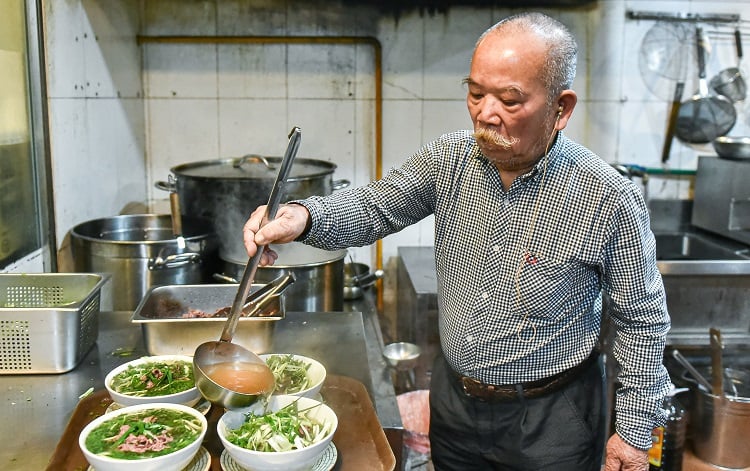The word “phở” was first officially recorded in the Vietnamese Dictionary (Việt Nam Tự điển) published in 1930. Nearly eight decades later, in 2007, “pho” made its way into the Oxford English Dictionary (Concise Edition).
Phở doesn’t just exist in daily life of Vietnam; it’s woven into its literature and memory. Nguyễn Tuân, a renowned Vietnamese author known for his rich, expressive prose and love for traditional culture, once described it as “a classic gift, full of our national character.” Another beloved writer, Thạch Lam, known for his poetic sensitivity to food, famously wrote: “Phở is a special delicacy of Hà Nội. You can find it elsewhere, but only in Hà Nội does it taste truly right.”
In 2024, Hà Nội-style phở was officially recognized as a national intangible cultural heritage, reaffirming its cultural and emotional importance to the country. Many refer to it as “quốc hồn, quốc túy” - a phrase that can be roughly translated to “national spirit and essence.”
Despite Vietnam’s long 4,000-year history, most scholars believe that phở only emerged in Hà Nội between 1907 and 1910. In those early days, there were no storefronts. Phở was a street food, carried by vendors with shoulder poles (gánh hàng rong), winding through alleys and markets. The nostalgic cry “Phở đây…” (“Hot phở here!”) drifting through the cold Hà Nội air became part of the city’s soundscape and collective memory.
There are several theories about phở’s origin, with three main contenders:
- It may have evolved from pot-au-feu, the French beef stew introduced during the colonial era.
- Others suggest it came from the Chinese dish ngưu nhục phấn (beef with rice noodles), with “phở” being a localized pronunciation of “phấn.”
- A third theory claims it started as bún xáo trâu (a Vietnamese buffalo-based noodle soup) which later replaced buffalo with beef.
Still, these remain only as theories. The true origin of phở is a flavorful mystery.
By the 1940s and 1950s, phở had become a beloved staple among Hà Nội’s middle and upper classes. Yet beef was still considered a luxury. For Vietnamese farmers, a cow was a treasure, valued for its role in plowing fields, not for eating. It was “the head of the household’s livelihood.”
That’s how the later-born sibling of beef phở - chicken phở (phở gà) came to be: a more affordable. Some jokingly call it “the poor man’s phở”, or a culinary “plan B”.

5AM is Vietnam’s first-ever sunrise music event, co-hosted by Vietnam Airlines, SpaceSpeakers Group, and Vietcetera. After successful editions in Ho Chi Minh City and Da Lat, Season 3 of 5AM arrives in Hanoi - awakening the thousand-year-old capital with music, sports, and culture under the theme Eye-Conic Hanoi.
More than just a music event, 5AM Season 3 kicks off with the 5AM Run, sparking fresh energy and healthy habits, alongside the Heritage Race, a cultural activity designed to inspire young people to explore and fall in love with Vietnam through iconic landmarks across Hanoi.
Limited tickets available. Don’t miss your chance to be part of Hanoi’s most Eye-Conic sunrise - click here to join the experience.
